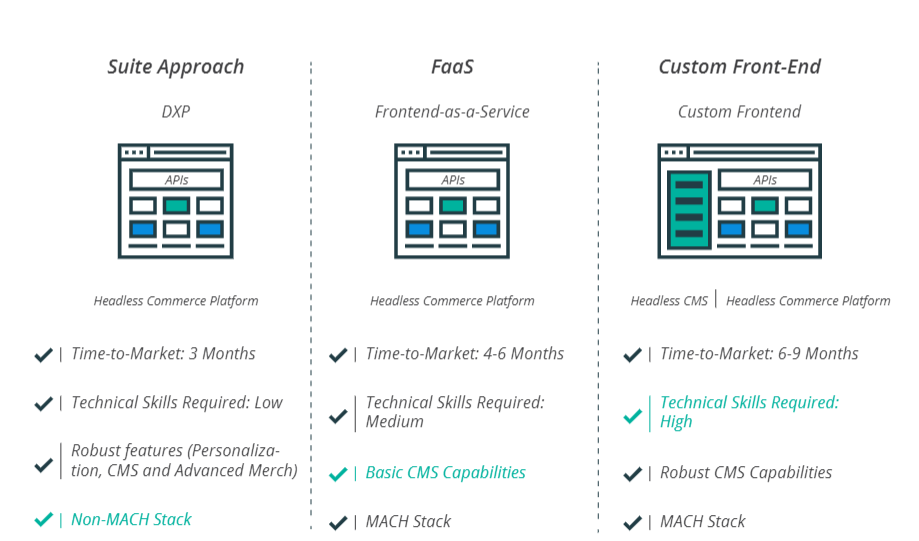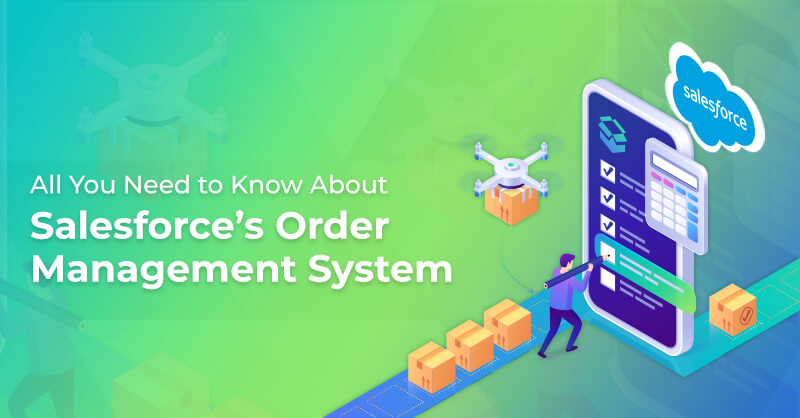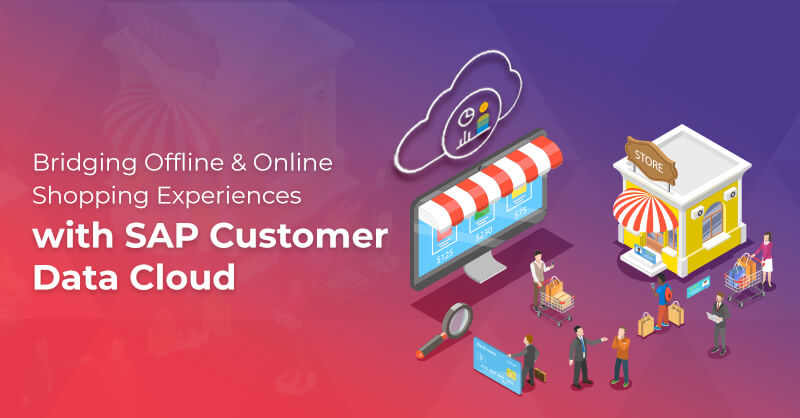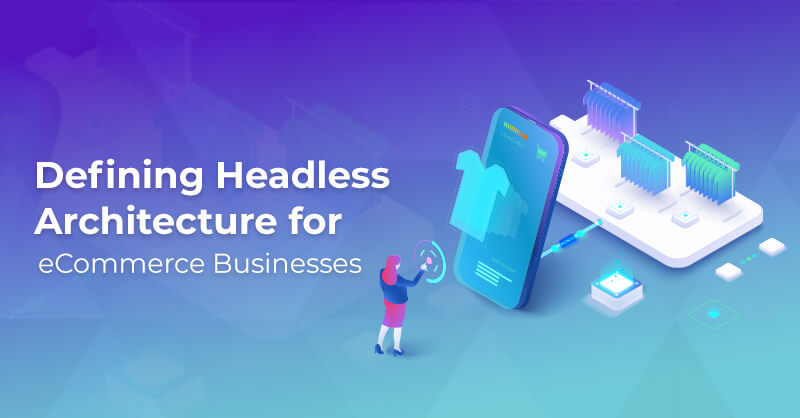Selecting the Ideal Front-End Commerce Architecture with commercetools
Written by Poonam Chandersy
Technical Content WriterA traditional eCommerce software is built as a strictly coupled application with no clear distinction between the front-end and back-end. Due to its lack of flexibility and poor performance, it is being replaced with modern agile approaches. Headless commerce is one such substitute as it focuses on decoupling the front-end from the backend and composing the system from a business-oriented cloud-based service via API. It is now becoming the standard for modern commerce.
A headless front-end provides businesses with the confidence to create brand awareness. By decoupling the front-end from the commercetools headless commerce platform, the team can be removed from the limitations of a monolithic stack and has the liberty to change and innovate the front-end at an accelerated pace.
Delivering faster, engaging digital experiences with a best-of-breed approach, a headless front-end improves conversion and customer loyalty. The front-end structure is not limited to the one prescribed by the commerce platform, so the business has the freedom to customize experiences and shape the brand's identity. The pace with which the front-end innovation can take place, allows for quick adoption of the latest customer experience technology and rapid reactions to the ever-changing market trends and increasing shopper expectations.
There are several front-end options to choose from; they fall into three broad categories:

Suite Approach
The suite approach utilizes a Digital Experience Platform (DXP) that provides an all-in-one solution to deliver experiences to the customers. THE DXP suite contains a combination of features and business user tools, such as drag-and-drop layout management, personalization, search, and merchandising tools, among many others. The suite approach is designed for companies with smaller IT teams or for those looking for an "out of the box" solution – as it may not work well for companies that have a large team of front-end developers looking to build their own experiences.
Front-end as a Service (FaaS)
The Frontend as a Service (FaaS) approach utilizes solutions that provide the front-end customer-facing experience without all the features of a complete Digital Experience Platform (DXP) but with capabilities such as a business user interface for managing the layout, look and feel, etc. This is a good solution for companies with a moderate level of front-end development capabilities looking for an "out of the box solution" for businesses to manage the content and layout.
Custom Frontend
The most significant benefit of the commercetools platform is that 100% of the functionality is exposed via APIs. This effectively provides front-end developers the flexibility and freedom to develop any user interfaces they need for all the different channels and touchpoints they intend on using to interact with the customers.
There has been an emergence of frameworks built on top of the popular node.js.architecture for the web and mobile web channels. Examples of this include Angular, React, Vue.js, among others. commercetools provides an open-source Single Page Application built on Vue.js for developers looking for a reference application to get them started. They also offer an iOS reference application for iOS developers looking to develop native iOS apps. To simplify and speed up development, commercetools also provides the client SDKs in popular languages such as Java, JavaScript, PHP, iOS, and .NET.
The Frontend Vendor Landscape
While selecting commercetools' headless commerce platform, businesses have the ultimate freedom and flexibility to build out the front-end. In addition, the option to use any of the approaches described above or a combination of them allows businesses to decide how they want to address customer interactions and touchpoints with the brand.
Conclusion
commercetools is a pioneer in offering a highly configurable and expandable platform. As a result, businesses profit from increased flexibility and a faster time to market, while consumers enjoy cutting-edge and personalized end-to-end processes.
While individual strategy and status quo determine which eCommerce architecture works best, Royal Cyber's certified experts can help make these decisions and support your evolution with a deep technical expertise and architecture understanding. Contact us to learn how we can enable you to put your customers first and prepare your business to be future-ready.



